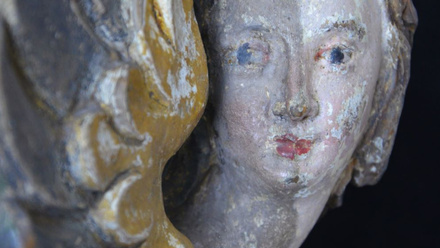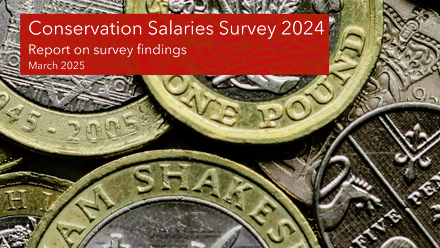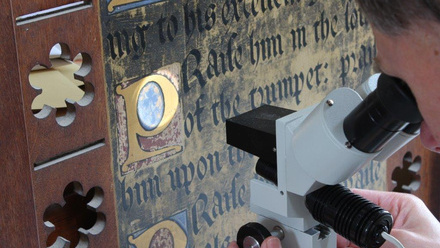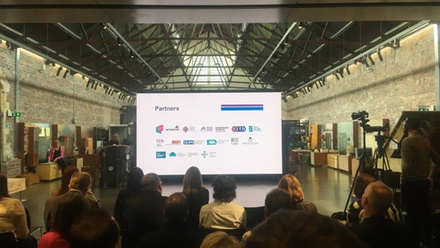In 2019, Icon partnered with the Chartered Institute for Archaeologists (CIfA), Historic England and Loud Marketing to develop a Labour Market Intelligence (LMI) Toolkit to enable the collection, analysis and reporting of LMI within the heritage sector.
What was the goal we set out to achieve?
Icon’s Conservation Labour Market Intelligence 2012-2013 report provided data on the composition of the workforce and insight on issues like skills gaps and shortages within the workforce. However, in 2018 when this project emerged, the evidence was heavily out of date. Refreshing our research became a priority, as up-to-date LMI supports Icon’s strategic objectives in important ways:
- For advocacy – to identify challenges for the profession and to develop policy asks and solutions to address them
- To support excellence – to inform training and education and improve our advice and support on issues like salaries
- And to foster engagement – by highlighting gaps in the membership and workforce with a view to increasing and widening participation in conservation
The need for conservation sector data identified by Icon was mirrored across the heritage sector. Speaking to our partners, we became increasingly aware of how independent organizations often had insufficient capacity to undertake workforce research regularly on their own. This had created a reliance on external funding, which in turn led to inconsistent methodologies and reporting cycles that did not give a broad overview of sector trends.
What did we do?
We identified an opportunity for Icon and CIfA to work in partnership to develop a sector-wide model for producing workforce research. We put together a joint plan for a project for creating a cost-effective tool that empowered heritage organisations with a mechanism to independently conduct workforce research on a regular basis.
Historic England agreed with our ambition and generously agreed to fund the project in January 2019. Following a competitive tendering process, we appointed Loud Marketing as our partner to help us create the tool. We also recruited an experienced Project Board comprising representatives from Historic England, Cadw, Historic Environment Scotland, Tate and the National Trust.
Following an intense summer of development comprising workshops, ongoing discussion, and two rigorous consultation stages where we tested our progress on potential future users, the Toolkit was complete!
What was the outcome?
The tool comprises an accessible methodology and survey template that can be used by all professional bodies and organisations wishing to survey the heritage workforce. It provides questions and answer options that can be easily copy-pasted onto an online survey platform (e.g. Survey Monkey) and guides users in the analysis and presentation of their results. This facilitates the ongoing collection, analysis and presentation of data on workforce size, composition, skills and trends in employment and education.
The Toolkit is freely accessible and can be found on Historic England's website. By making the Toolkit open access, we equipped heritage organisations with a tool to independently conduct workforce research on a regular basis. The Toolkit minimises reliance on external funding, provides a model for sub-sector workforce research and allows cross-referencing and comparison of data that corresponds with both Historic England’s developing approach to LMI and Office for National Statistics methodologies and datasets.
What did we learn?
Collaboration and consultation was key to the project’s success, demonstrating Icon’s values of being “collaborative and generous” in working with partners to achieve the best results. The testing stages were essential to collecting useful and actionable feedback from a range of stakeholders. This highlighted the importance of a well-connected Project Team complimented by a representative Project Board that could efficiently identify and connect with the most suitable contacts. While we received a positive response rate to our consultations, the timing of the testing stages during the summer holidays was a risk. Running a user consultation outside of the holiday period could have resulted in even greater feedback.
What will we do next?
We will continue to promote the toolkit widely with our partners and encourage its use so that we can get a representative overview of trends that are shared but also unique amongst different subsectors and specialisms.
While we developed the Toolkit as a mutual resource for the sector, we are naturally brimming with excitement to put the Toolkit to good use ourselves! We have already used elements of the Toolkit in putting together our Coronavirus impact survey, which we will repeat in 6 months’ time. Historic England described the research as “a great example of working together” adding that “HE really appreciates ICON’s generosity in being willing to share information.” Our Coronavirus research findings have been used in ministerial briefings to demonstrate to Government the severe impact of the pandemic on the profession. We plan to undertake a full LMI research project using the Toolkit in 2020/21.
As the broader objective of the project is to support the development and sustainability of the heritage workforce, to build understanding of the value that the sector delivers, and to inform policy and decision making, our work doesn’t stop here. Once we have the data and insight, we will apply it: to advocate on behalf of the profession, to tailor our activities to support excellence in the workforce and increase public engagement with conservation. In practice, you can expect to see much more evidence-based advocacy campaigns and policy responses and more targeted training offers and support.
---
Image:Photo by Hans Reniers on Unsplash






